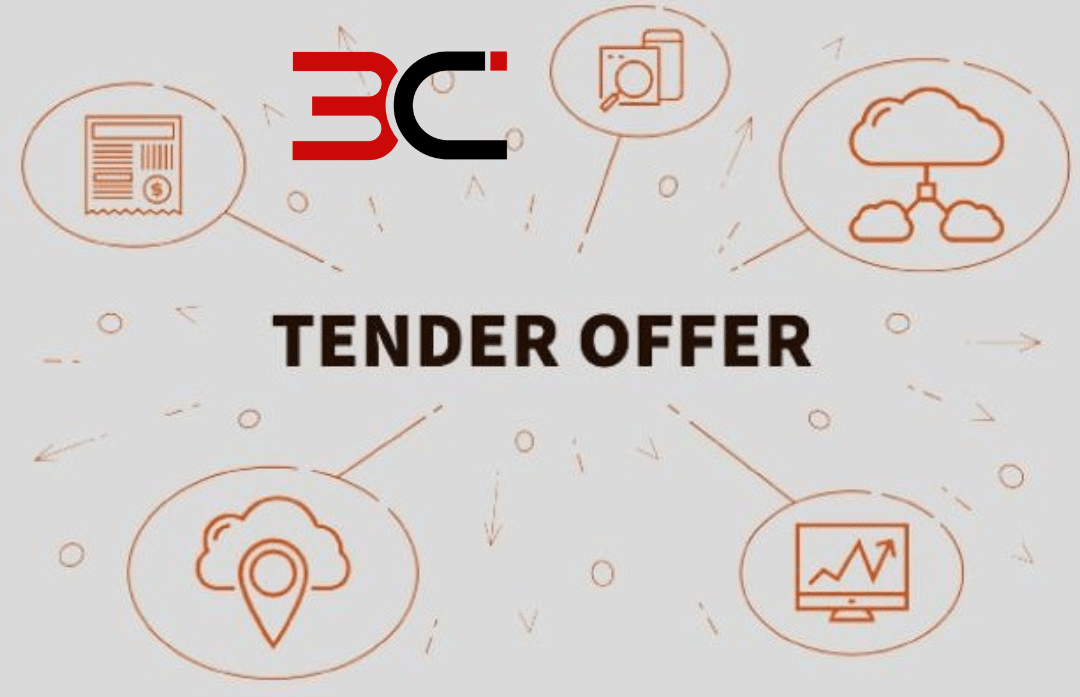Theoretically, putting government procurement procedures online can reduce costs by lowering bidder collusion and boosting open competition for contracts.
According to a cost-benefit study conducted by the researcher, the government’s most cost-effective expenditure might be a larger deployment of e-procurement in the civil sector in Bangladesh. That is why anyone would be curious to know the status of e-procurement in Bangladesh. You will be glad to know the system is completely functional now.
Knowing what e-procurement is and how it works can be beneficial. Therefore, we will be discussing everything about e-procurement today, answering every query on your mind.
What is E-procurement in Bangladesh?
In a nutshell, electronic-Government Procurement, or e-GP is the process that involves governmental organizations and other stakeholders in the procurement community to carry out all tasks of the Government Procurement Process Cycle (GPPC) for acquisition works and consulting services efficiently in procurement management.
Electronic procurement is the practice of requesting, ordering, and buying products and services online. It is often referred to as e-procurement or supplier exchange. In contrast to e-commerce, e-procurement is a B2B (Buyer to Buyer) platform that relies on a supplier’s closed system and is only accessible to registered users. Electronic procurement streamlines communications between customers and selected suppliers through bidding, purchasing orders, and invoicing.
Know About The e-Government Procurement (e-GP) System
The need to manually complete time-consuming acquisition procedures, including eTenders and eAuctions, transferring supplier contracts, and completing questionnaires for supplier onboarding, is eliminated with e-procurement.
A centralized portal is used to connect multiple organizations and procedures in the process. In Bangladesh, the e-Government Procurement (e-GP) portal is – (https://www.eprocure.gov.bd/).
This single web-based portal defines the e-GP system, where public agencies like Procuring Agencies (PAs) and Procuring Entities (PEs) may do their procurement-related tasks utilizing a dedicated, protected web-based interface. It is housed in the e-GP Data Center at CPTU (Central Procurement Technical Unit). The PAs and PEs have internet access to the online portal for their usage.
The e-GP infrastructure must be used to handle all of the government’s public procurement activities, and it must be introduced gradually. Process automation and redesign are to be used to increase government organizations’ efficiency in managing public procurement. The technology would make it possible for the government to keep accurate real-time snaps of the procurement activity. The government encourages the supplier community to take part in e-business by using e-GP.
The e-GP System was introduced in two stages –
- e-Tendering System: Covering all aspects of the eTendering process. This includes –
- Registration for the centralized user
- Preparing Annual Procurement Plan (APP)
- Making bid and tender documentation
- Generating tender and bid
- Inviting tenders
- Selling Tender Documents (eTD)
- Conducting online pre-bid meetings
- Collecting tender and bid security
- Submitting online bid and tender
- Evaluating bids and negotiations (if applicable)
- Awarding contracts
- e-Contract Management System (e-CMS): Covering all aspects of the eContract Management process. This includes –
- Creating and submitting work plans
- Defining milestones
- Monitoring and tracking progress
- Generating reports
- Generating bills
- Generating completed certificates
- Ensuring quality control
Source: (cptu.gov.bd)
Well, this was all about the e-procurement process in Bangladesh. The goal of the e-GP is to increase public procurement’s transparency and efficiency through the adoption of a holistic e-GP solution by all national government agencies.
Originally, a small number of PEs from the target agencies in Bangladesh, such as the Rural Electrification Board (REB), Bangladesh Water Development Board (BWDB), Local Government Engineering Department (LGED), and Roads and Highways Department (RHD), would be subject to this on a pilot basis.
It is now being applied to all government agencies involved in public procurement. All parties involved are required to utilize the e-GP system in accordance with the “Government Procurement (e-GP) Guidelines” produced in accordance with Section 67 of the PPA-2006 and Rule 128 of the PPR-2008 and released.
In the future, the system will be gradually implemented by all procurement entities. The World Bank is supporting the adoption of this comprehensive e-GP system that was implemented as part of the Public Procurement Reform (PPR) Program by all government agencies.
Additionally, they may ensure efficiency, accountability, and integrity in Bangladesh’s public procurement process with the use of this online platform.
The Modules of e-procurement in Bangladesh
The Bangladesh e-Government Procurement (e-GP) system is made up of several interconnected modules. They are –
- Procurement Management Information Systems (PROMIS)
- Management for workflow
- Administration for security and system
- Centralized registration
- e-Payments
- e-Contract Management System (e-CMS)
- e-Tendering (e-Evaluation, e-Lodgement, e-Contract award, e-Publishing/e-Advertisement)
- Fixing errors and handling exceptions
- Usability and help for application
Apart from the above modules, there can be other components in an e-procurement system. They are –
- E-sourcing: defining needs and screening possible vendors.
- E-ordering and payment: generating requisitions and sales orders, as well as receiving requested goods.
- E-auctioning: includes contract administration, supplier evaluation, and negotiation.
- Analytics: review spending and make any necessary corrections.
How to Submit Online GP Tender in Bangladesh
We will break down the e-gp tender submission process guidelines. The process is very easy. However, you need to meet the basic requirements and get ready for e-gp document upload. Along with that, you should be aware of the e-GP tender opening.
Without further ado, let’s begin the e-gp tender submission process in 4 steps –
- Step 1:
First of all, you need to register for the e-GP. You may need to spend BDT 5,000 for nationwide tendering and USD $200 for international tendering. You can find more about the registration process on the official website.
- Step 2:
After successful registration, go to (www.eprocure.gov.bd) and hit the ‘e-Tenders’ option. After that, click on the title of the tender to find the e-gp tender opening. You can filter tender notices with ‘Limited Tender’, ‘All Tender’, and ‘My Tender’. You can also see the e-gp documents that need to be uploaded.
- Step 3:
You must pay the tender paperwork cost in order to participate in a tender. You must ensure you have read the required documents in the Tender Documents (Docs) tab. After that, fill up the tender forms and upload the required e-gp documents in the Tender Preparation tab.
All the tinder forms will be encrypted after you make sure the summary has been confirmed. If you think all the information is correct and valid, then click the “Final Submission” button.
- Step 4:
Depending on the tender acceptance, an ‘Accept/Decline’ link will appear in the Notification of Award (NOA) tab. Click ‘Accept’ or ‘Decline’ according to your choice by navigating to ‘Tender’s NOA Tab’ >> ‘Action’.
If you accept, then you must provide the necessary bank information within the allocated time.
Perhaps, the following video will act as a great e-gp tender submission tutorial –
Significant Effects of E-procurement in Bangladesh
The department’s deployment of the e-GP system at multiple locations around the nation created a semi-design that aids in determining the impacts of e-GP. For instance, the Local Government Engineering Department (LGED) in Bangladesh uses the e-GP system. The price-to-cost ratio of contracts is found to have decreased by at least 10.25%. After introducing e-GP, this price was reduced by 11.85%.
In 2013 alone, LGED purchased 1,845 goods for an average cost of BDT 3,911,064 (about $50,000). The department will save a total of BDT 855,085,700 (almost $11 million) thanks to the e-GP system, with a price decrease of 11.85% for each item.
Researchers at IGC performed a formal cost-benefit study of expanding e-procurement to more government entities in Bangladesh. According to estimates, the e-GP changeover will save BDT 663 for every single taka invested. Hence, this makes it one of the most cost-effective investments the government of Bangladesh could ever make.
The decision to expand e-procurement was made by the government in May 2016, and it was announced in the budget address for the 2016–2017 fiscal year.
The Benefits of E-procurement in Bangladesh
After the announcement of e-procurement in Bangladesh, various sectors have seen tremendous improvement. The number and growth of tender invitations have increased after the switch from manual to electronic tender.
Figure: Values and trends in electronically managed tenders
There has also been a drastic change in the risk of corruption for the benefit of e-GP invitations. The following graph will give a better demonstration –
Figure: The e-GP intervention has changed the indicators of corruption risk.
Aside from all these, here are some general advantages of e-procurement –
- Automated solutions and integrated monitoring solutions decrease the administrative burden on vendors, enhance performance, boost workflow effectiveness, and provide cost savings.
- With e-procurement, businesses may choose from a wider range of goods and services to suit their own requirements.
- Because e-procurement centralizes all information, stakeholders may quickly access it to facilitate judgment.
- The procurement team may shift resources to higher-value operations because it no longer needs to do laborious, redundant, or low-value duties.
- The procurement process is made more automated through e-procurement. It facilitates a faster procurement process and shorter delivery periods.
Conclusion
So, have you gathered some ideas on e-procurement in Bangladesh? We guess you did. E-procurement began in the 1980s once the Electronic Data Interchange (EDI) was developed. A couple of years later, EDI advancements made it possible for businesses to create online vendor catalogs.
E-procurement now includes everything from contract administration to electronic payments and orders to vendor selection and evaluation. However, e-procurement won’t be effective for all kinds of purchases. For instance, it could not be effective when buying things that are mission-critical and are only accessible from a few vendors.

